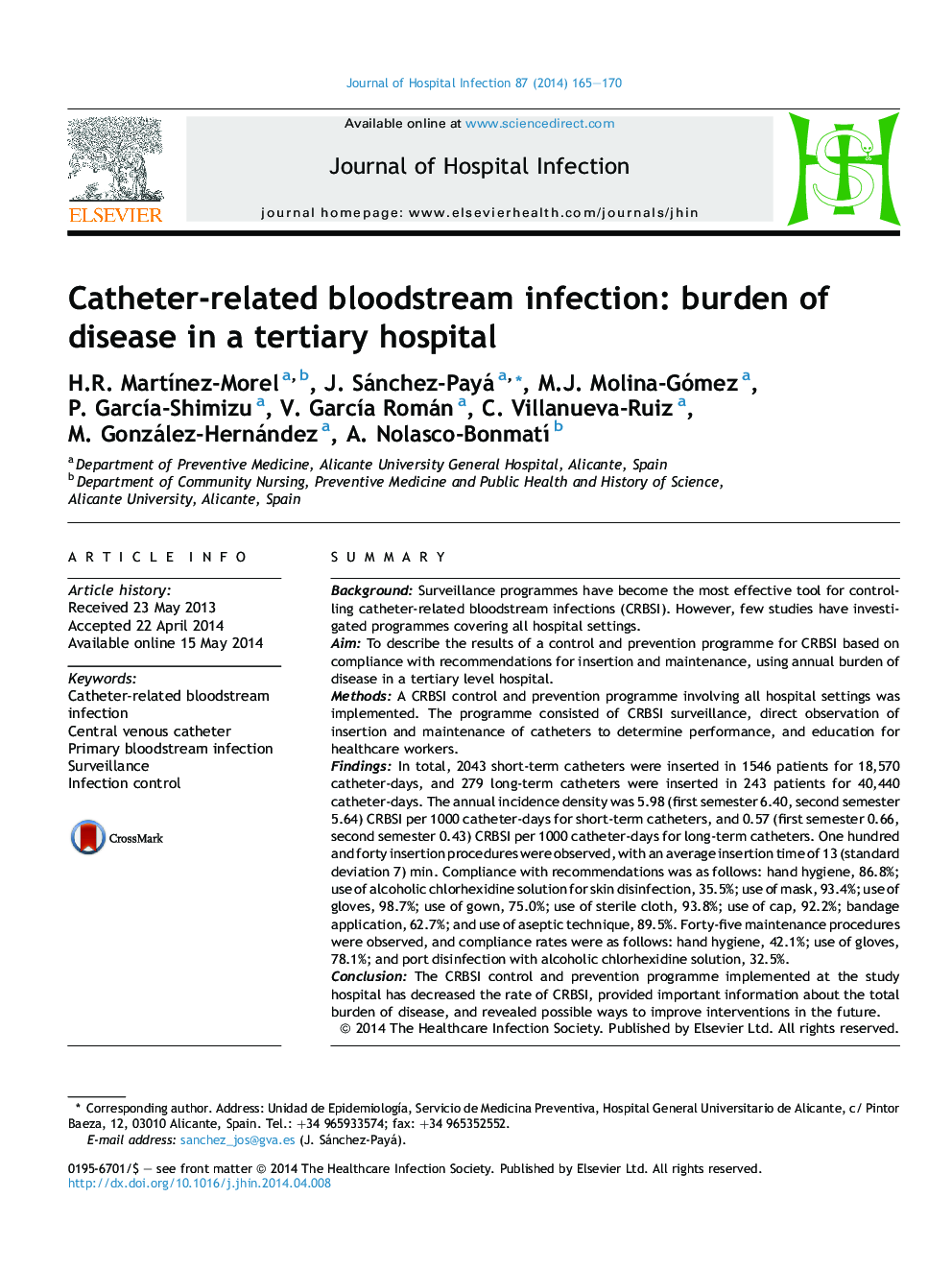| کد مقاله | کد نشریه | سال انتشار | مقاله انگلیسی | نسخه تمام متن |
|---|---|---|---|---|
| 3371576 | 1219210 | 2014 | 6 صفحه PDF | دانلود رایگان |
SummaryBackgroundSurveillance programmes have become the most effective tool for controlling catheter-related bloodstream infections (CRBSI). However, few studies have investigated programmes covering all hospital settings.AimTo describe the results of a control and prevention programme for CRBSI based on compliance with recommendations for insertion and maintenance, using annual burden of disease in a tertiary level hospital.MethodsA CRBSI control and prevention programme involving all hospital settings was implemented. The programme consisted of CRBSI surveillance, direct observation of insertion and maintenance of catheters to determine performance, and education for healthcare workers.FindingsIn total, 2043 short-term catheters were inserted in 1546 patients for 18,570 catheter-days, and 279 long-term catheters were inserted in 243 patients for 40,440 catheter-days. The annual incidence density was 5.98 (first semester 6.40, second semester 5.64) CRBSI per 1000 catheter-days for short-term catheters, and 0.57 (first semester 0.66, second semester 0.43) CRBSI per 1000 catheter-days for long-term catheters. One hundred and forty insertion procedures were observed, with an average insertion time of 13 (standard deviation 7) min. Compliance with recommendations was as follows: hand hygiene, 86.8%; use of alcoholic chlorhexidine solution for skin disinfection, 35.5%; use of mask, 93.4%; use of gloves, 98.7%; use of gown, 75.0%; use of sterile cloth, 93.8%; use of cap, 92.2%; bandage application, 62.7%; and use of aseptic technique, 89.5%. Forty-five maintenance procedures were observed, and compliance rates were as follows: hand hygiene, 42.1%; use of gloves, 78.1%; and port disinfection with alcoholic chlorhexidine solution, 32.5%.ConclusionThe CRBSI control and prevention programme implemented at the study hospital has decreased the rate of CRBSI, provided important information about the total burden of disease, and revealed possible ways to improve interventions in the future.
Journal: Journal of Hospital Infection - Volume 87, Issue 3, July 2014, Pages 165–170
